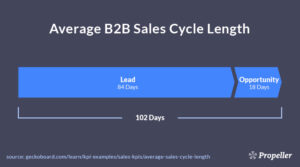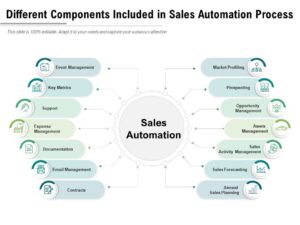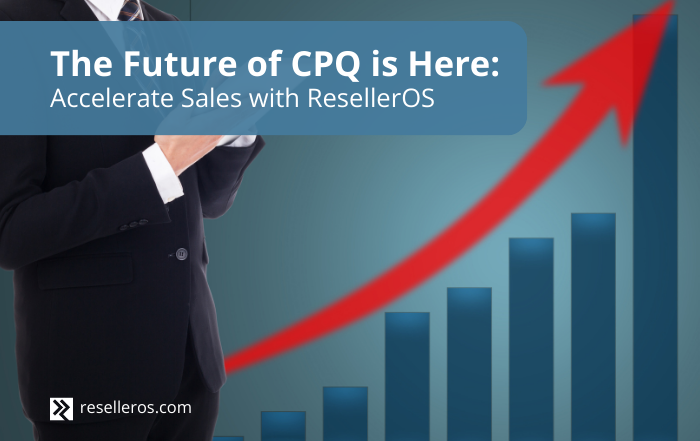It’s not hard to see why companies find it difficult to shorten their sales cycle. On average, the B2B sales cycle length is more than 3 months (102 days to be exact) and only about a quarter of true opportunities close at their expected date.
There’s a lot of time and anticipated timeline movement for excuses and missed opportunities for improvement. But companies who do implement well-defined sales cycles bring in 18% more revenue than those who don’t.
So the conundrum is clear: companies with optimized sales cycles make more money, but actually optimizing the sales cycle is hard to do.
Fortunately, there are some proven strategies you can use to begin shortening your sales cycle right away. We’ll cover 5 of them here.
The Sales Cycle Challenge
Shortening your sales cycle can be a complex undertaking because there are some things that even the best managers and executives can’t control.
Misalignment can exist between a sales rep and prospect (e.g. schedules aren’t aligning, client has other priorities they aren’t communicating) and reps sometimes fail to act at the right time (e,g. they lag on unpleasant tasks, take too long to respond to a buyer request, or omit necessary paperwork).
These seemingly small mishaps can make a huge impact on your sales cycle. A rep that doesn’t respond to a Thursday morning request until Friday afternoon may set a deal back an entire week if that buyer is out of the office by the time they receive a response. Clients who aren’t communicative enough can leave sales reps guessing and drag out processes that should be simple to complete.
It’s easy for company leadership to allow this kind of back-and-forth to go on either because they don’t know it’s happening or they have other priorities to focus on. But the truth is that without an optimized sales cycle, companies miss out on revenue opportunities and overall profitability, an effect that eventually ripples out to every part of the company.
By focusing on eliminating friction between sales teams and prospective clients, companies can shorten their sales cycles and reap benefits across their organizations as a result.
4 Key Strategies to Shorten Your Sales Cycle
Automate Sales Cycle Pain Points
When the aim is a shortened sales cycle, just about any process that can be automated should be automated. The prospecting, proposal, quote, and contract generation processes can all be streamlined with a strong CRM like Salesforce. Even quote generation, meaningful proposals, and complex contracts can be automated to a degree.
Putting into place a comprehensive contract lifecycle management strategy accelerates simple processes that lag when done manually and streamline redlining and contract negotiation.
There are many more sales processes that can be automated, and companies should work on those most relevant for their teams.
Be Up-Front with Prospects
This one can get controversial depending on who you’re talking to, a sales rep or a B2B buyer. According to Hubspot, 54% of buyers want to talk about pricing on the very first sales call, while only 23% of sales reps are ready to do it. No surprise there, but if sales teams don’t have guidance on how to navigate this process it can definitely cause friction.
The right answer really exists somewhere in the middle. Sales reps are right to want to focus on the customer need and product value before jumping into pricing. At the same time, buyers are right to want to save their time and effort when they have a budget to adhere to.
Most prospective buyers enter into the buying process knowing the standard price range for whatever product or service they’re seeking. Still, if they have strict budget limitations or are particularly focused on price, sales reps should share the information when asked.
Similarly, sales reps shouldn’t dance around potential concerns or objections from buyers with the hope that they’ll resolve on their own or be compensated for in another way. Facing them head-on and as soon as possible shortens the sales cycle by keeping the process moving.
No one wants to lose a sale. But if there are inevitable barriers that will prevent a prospect from ever closing, it’s better to find out about it as soon as possible.
Use Electronic Signatures
What’s the one thing every person has on them at all times? Their phone.
Making it possible for buyers to sign documents from their phones (and tablets, and laptops, etc.) can significantly reduce the length of your sales cycle. In fact, e-signature cuts the average time required to receive signed documents from 5 days to 37 minutes. When you multiply that by even a few documents, you’re seeing a sales cycle shortened by weeks.
If time and cost savings aren’t enough to convince you, consider that e-signatures are just plain expected by consumers in today’s digital world. Not having the capability in place very likely makes your company appear to lag behind its competitors.
Adopt Market Intelligence Tools
Adopting systems that deliver real-time market intelligence insights, connect companies to high-potential prospects, and produce reliable “buying signals” can transform the length and structure of your sales cycle.
Tools like DiscoverOrg and ZoomInfo can widen your pipeline, provide clean and usable data, and reduce the time your sales team spends researching new leads, instead allowing them to focus on closing them.
Market intelligence tools also reinforce best practices and help ensure consistent information is shared across teams and companies, increasing overall efficiency and productivity.
Why Shortening Your Sales Cycle is a Must
It can seem like your team is getting by just fine without concerted efforts to shorten your sales cycle, and maybe they are. But a sales cycle that is clearly defined, optimized for length and process, and clearly communicated to team members not only benefits the organization but creates more empowered and accountable sales reps. Not only does it affect your bottom line, it can enhance your culture.








